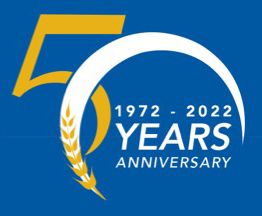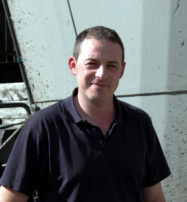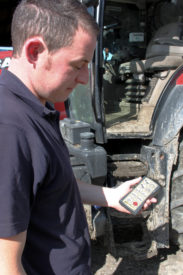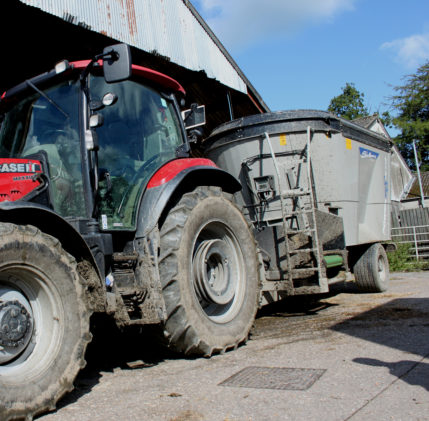One of the first Shelbourne Reynolds Powermix Plus diet feeders to be equipped with the new remote control unit now optionally available on the machines has come through its first season having proven its ability to improve ease of operation and machine handling.
Fingertip control helps smaller Powermix feed more cows in less time
Launched at Grassland and Muck 2017, the handheld controller is designed to take the place of the physically-connected joystick used on previous models. One of the primary benefits is the elimination of the risk of joystick and cable damage when uncoupling the feeder from the tractor. Because it works via radio signals, the unit has no physical connection with the machine, so there are no cables to stretch, twist or break. It also makes uncoupling the feeder a faster process, allowing users to more quickly switch their tractor to other tasks.
Designed to be light, compact and easy to use, the controller includes buttons to switch between the two auger speeds, operate the conveyor side-shift, select conveyor travel direction and open/close the feed-out door. Belt speed can also be altered using the unit, with each press of the plus or minus buttons effecting a change of ten per cent. Pressing and holding either button returns the belt speed to its original setting.
The Velcourt-managed Castle Hill Estate near South Molton, Devon, was one of the first to take delivery of a Shelbourne diet feeder equipped with the new controller, and farm manager Sam Briant-Evans says it has proved to make both machine operation and coupling/uncoupling the feeder much easier.
“In recent years we’ve changed a great deal of the way the herd here is managed, switching from feeding and calving all year round to a low-input system with spring block calving and winter feeding only, although we buffer feed during the summer when slow grass growth makes it necessary. We now calve from February to April, with peak production then reached from May to June, and every cow is dried off by the first week of December.
“Our land suits this sort of lower input system, and because of its lower costs it helps the business’s resilience during the sort of milk price pressures we’ve faced in recent years.
“Our focus is on milk quality, with a herd based on British Friesians and crossbreds plus some NZ genetics, producing an average 5,500 litres at 4.5% butterfat and 3.3% protein from twice-a-day milking, and supplying Davidstow Creamery for Cheddar cheese production. But we’ve also been building numbers, to the point where we’re now milking 850 head, up from 350.”
Cows and followers are fed a full TMR from October through to April, with dry cows receiving a mix of grass and wholecrop triticale silage plus wheat straw for roughage. The straw is pre-chopped in the feeder, and this is one reason why the business has recently upgraded to a Powermix Plus.
“We have a contract hire deal with Shelbourne Reynolds, and this is our third Powermix machine,” explains Sam.
“One of the reasons we chose a Powermix Plus is that we were promised improved straw processing performance from the improved tub and auger blade design. Coupled with the new controller and other machine improvements, we were assured we would be able to feed the same number of cows with a smaller machine, which we wanted to do to make feeding easier around some of our buildings with lower doorways.
“That meant we replaced our 22 cu m model with a 20 cu m Powermix Plus with the new remote control unit, which we were offered the chance to trial before it went into full production.”
The decision to select a machine with less capacity but more technology and an improved design has been fully justified, with the new model having subsequently cut feeding times and reduced the diesel consumption of the Case IH Maxxum 120 used to operate it, says Sam.
“We can feed another load and a half in half an hour less than it took us with our old model. Some of that is due to the better straw processing and the ability to move more easily around our buildings. But the new control unit has also been a big help. Our previous machine required the connection of three sets of remote valves, whereas with this model only one set is required, plus the controller. That helps considerably if it’s necessary to uncouple the feeder from the tractor.
“The controller makes the feeder very easy to operate, and battery life is good. Changing gearbox speed and altering belt speed are also much easier, as they can be done at the press of a button on the control unit. It’s simple to move from a slow speed for on-floor feeding to a faster rate for propelling material up into troughs.
“Although we’ve moved to a smaller machine, improved design and technology has made a big difference to the feeding process.”





